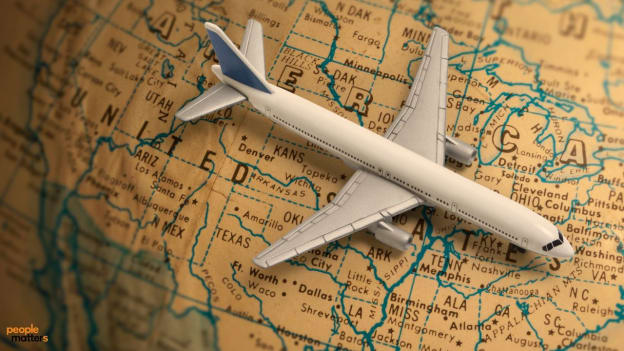Business travel: How to stay safe during turbulence

Turbulence is a common occurrence during flights, often causing discomfort and sometimes leading to injuries like the recent case of Singapore Airlines Flight SQ321.
In the incident, one passenger died and many were injured due to severe turbulence, most of them were standing passengers.
For business travellers, who frequently find themselves on planes, the incident involving the ill-fated Singapore Airlines flight and, more recently, a Qatar Airways flight, should be a reminder to take safety measures against turbulence seriously.
Yes, seat belts save lives!
Experts unanimously agree that keeping seat belts fastened at all times while seated is the most effective way to avoid serious injuries.
“Even when seat belts are fastened loosely, they are very effective in avoiding injuries during strong turbulence on flights,” Rico Merkert, a University of Sydney aviation expert, told news agency CNA.
For business travellers, who often prioritise comfort during long-haul flights, it's easy to forget about seat belts, especially when lying flat in business class beds.
However, adhering to safety instructions and keeping seat belts fastened should be a non-negotiable practice.
Clear air turbulence: A hidden danger in the sky
Clear air turbulence, which experts believe affected Flight SQ321, is a frequent occurrence, often catching passengers off guard.
It's a primary reason why airlines advise keeping seat belts fastened even when the “fasten seat belt” sign is off.
Aviation experts said most passengers tend to disregard this advice, assuming it's safe because they see the cabin crew moving around.
However, clear air turbulence can strike without warning, making it imperative to remain buckled up even when the seat belt sign is off.
“Unless you’re strapped in, if the aeroplane goes down, you’re going to go upwards. So, the secret is keeping your belt done up,” veteran former pilot Terry Tozer told the Daily Mail UK.
Navigating turbulence when not seated
If turbulence hits while you're not in your seat, experts said that the wise thing to do is to take immediate action.
Aviation safety consultant Michael Daniel said crouching low and holding onto an armrest, cabin, or headrest – anything sturdy – is a good first option.
If you're heading to the toilet and turbulence begins, return to your seat promptly to minimise the possible effects of the turbulence, Daniel said.
Minimise liquid intake to reduce trips to the lavatory, especially during flights over oceans where turbulence is more likely.
Choosing your seat wisely
While no seat is entirely immune to turbulence, some locations offer a smoother ride, according to Tozer, who is also the author of the book, Confessions of an Airline Pilot: Why Planes Crash.
He said sitting over the wing can help since this area is less affected by turbulence, but it will not eliminate the effects entirely.
Nicky Kelvin, travel editor at The Points Guy site, recommended sitting in the middle of the plane over the wings, away from galleys that contain items that can become projectiles during extreme turbulence.
Kelvin also said a window seat allows a person to avoid being directly under overhead compartments, which might open during severe turbulence.
From a pilot’s perspective
According to Tozer, during the flight, pilots receive weather information highlighting areas with potential turbulence. They also use weather radar to detect thunderstorm activity.
While clear air turbulence is harder to predict, pilots can avoid it based on available meteorological data.
Tozer said extreme turbulence events, like the one experienced by Singapore Airlines, are rare.
In his 20-year career, he encountered only one instance of severe turbulence, and it was less intense than the SQ321 incident.
Turbulence, experts agree, is an unavoidable aspect of air travel.
However, by following safety guidelines, choosing your seat wisely, and heeding the advice of experienced pilots, business travellers can significantly enhance their safety during turbulence.
















